As a devoted cat owner, you may have noticed your feline friend’s eyes watering from time to time.
While occasional tear production is normal, consistent or excessive eye-watering may indicate an underlying issue.
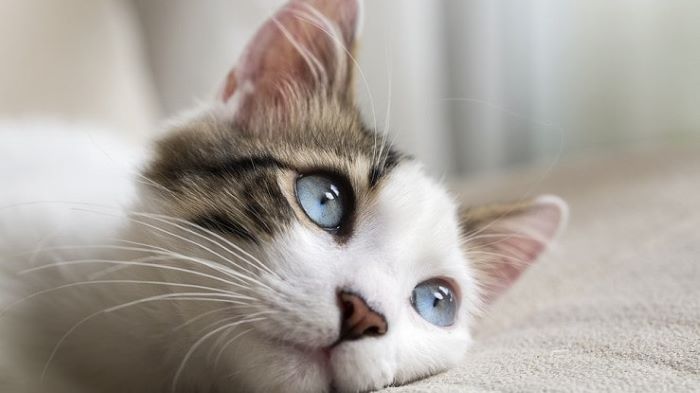
In this article, we will delve into the reasons behind cats’ eye-watering, explore possible treatments, and discuss preventive measures to keep your furry companion’s eyes healthy and vibrant.
Why Is My Cat’s Eye-Watering? Possible Causes
Several factors can contribute to your cat’s eye-watering, including natural tear production, underlying health issues, and environmental factors. Here are some of them:
1. Natural Tear Production
Natural tear production plays a crucial role in a cat’s watering eyes. Tears are produced by the lacrimal glands and help keep the eyes moisturized and protected.
Tears consist of a balanced combination of water, mucus, oils, and antibodies that work together to maintain eye health.
When the eyes detect irritants or foreign particles, they respond by producing more tears to flush them out and provide relief.
Additionally, tears help nourish the cornea, and the transparent front surface of the eye, and maintain its clarity.
Adequate tear production is essential for proper eye function and to prevent dryness and discomfort.
2. Tear Duct Blockage
“Nasolacrimal duct obstruction primarily leads to cosmetic issues in cats. Affected cats commonly experience excessive tearing or noticeable reddish tear stains on their face”
“In more severe or long-standing cases, bacteria may start to thrive in the damp fur around the eyes”, confirms experts at the VCA Hospitals.
3. Allergies or Irritants
Allergies or irritants can cause a cat’s eyes to water. Just like humans, cats can be sensitive to certain substances in their environment.
Common allergens and irritants such as dust, pollen, mold, smoke, or certain chemicals can trigger an allergic reaction in cats.
When exposed to these substances, the cat’s immune system responds by releasing histamines, leading to various allergic symptoms, including watering eyes.
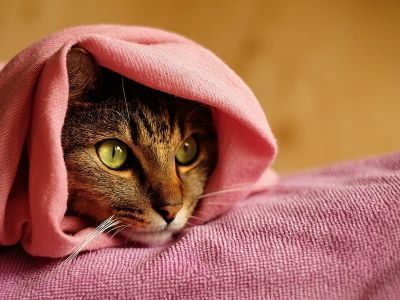
Additionally, direct irritation from strong odors, fumes, or foreign particles can also stimulate excessive tear production in cats.
It is important to identify and minimize exposure to these allergens and irritants to help alleviate the cat’s discomfort and reduce eye-watering episodes.
4. Conjunctivitis
“Keratoconjunctivitis refers to an inflammatory process that involves both conjunctivitides – and the superficial cornea – keratitis, which can occur in association with viral, bacterial, autoimmune, toxic, and allergic etiologies”, suggests a study from NIH.
Dry eye, also known as Keratoconjunctivitis sicca (KCS), is a condition where a cat’s eyes don’t produce enough tears, causing inflammation in the outer layer of the eye called the cornea and the surrounding tissues[1].
Tears are important to keep the eye moist and remove debris. Cats have glands that produce a mixture of tears containing mucus, water, and oils/fats.
With KCS, these glands don’t make enough tears, leading to ongoing dryness in the eyes.
5. Corneal Ulcers or Injuries
A corneal ulcer refers to a hole that develops in the transparent front covering of the eyeball, called the cornea[2].
Sometimes, only the outer layer of the cornea is affected, but in more severe cases, the damage can be deeper and harder to treat.
The ulcer often appears with a layer of dead tissue over the wound, and the surface of the eye may have a cloudy appearance.
Usually, ulcers gradually increase in size, but in rare instances, they can become infected with harmful bacteria.
These bacteria can release chemicals that harm the surrounding healthy tissue, potentially leading to permanent blindness within a short span of time. The exact cause of corneal ulcers is often uncertain.
Many are a result of scratches from fights with other cats, foreign objects like grit or grass seeds getting stuck under the eyelid or eyelashes, or abnormal growth of hairs on the eyelid.
Bacterial or viral infections can also contribute to eye damage or worsen existing problems caused by physical injury.
6. Environmental Factors
Dust, pollen, smoke, and other airborne irritants can trigger an allergic reaction, leading to watery eyes. Similarly, exposure to chemicals, such as cleaning products or certain grooming products, can also irritate a cat’s eyes, causing excessive tearing.
Additionally, dry air or drafts in the environment can contribute to eye dryness and irritation, leading to watery eyes as a protective mechanism.
Ensuring a clean and well-ventilated living space, minimizing exposure to potential allergens and irritants, and maintaining proper humidity levels can help reduce environmental triggers and promote healthier eyes for your feline friend.
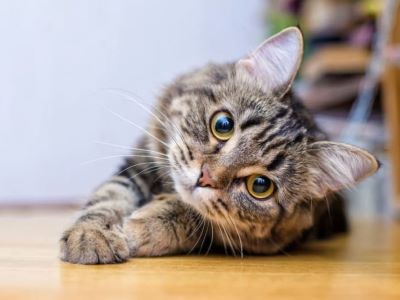
Treatment: What Do You Do When Your Cat’s Eye Is Watering?
If you notice consistent or concerning eye-watering in your cat, it’s essential to seek the vet’s guidance. The vet will diagnose the underlying cause and recommend appropriate treatments, which may include:
1. Eye Oinment and Cleaning
Here are some simplified step-by-step instructions for applying eye ointment to your cat[3]:
- Clean your cat’s eyes gently with a warm washcloth before applying the ointment.
- Hold the ointment tube between your thumb and index finger, pointing it downward.
- Use your other hand to gently pull down the lower eyelid or open both upper and lower eyelids.
- Support your cat’s head by placing your fingers under her jaw.
- Keep the ointment tube close to the eye but avoid touching the eye’s surface.
- Squeeze the prescribed amount of ointment directly onto the eyeball.
- Release your cat’s head and let her naturally blink to spread the ointment.
3. Veterinary Consultation and Examination
To address your cat’s watering eyes, it is crucial to consult a vet for an examination. During the appointment, the vet will thoroughly examine your cat’s eyes, check tear production, and assess for any abnormalities or signs of infection.
They will also inquire about your cat’s medical history and may recommend diagnostic tests such as tear production tests, eye staining, or cultures. Based on the findings, the vet will discuss treatment options, which may involve prescription eye drops or ointments.
They will provide instructions on administration and may suggest follow-up visits to monitor progress and adjust the treatment plan if needed.
4. Surgical Intervention
In some cases of consistent or severe watering eyes in cats, surgical intervention may be necessary.
Surgical options can include procedures to address tear duct blockages, correct eyelid abnormalities, or manage other underlying causes.
Consulting with a veterinarian will determine if surgical intervention is appropriate for your cat’s condition.
Prevention
Taking preventive measures may help maintain your cat’s eye health and reduce eye-watering episodes. Consider the following tips:
1. Maintaining Good Hygiene and Cleanliness
Maintaining good hygiene and cleanliness is important for managing watering eyes in cats. Regularly clean around the eyes with a warm washcloth to remove any discharge or debris.
Keeping the area clean helps to prevent bacterial growth and reduces the risk of further irritation or infection.
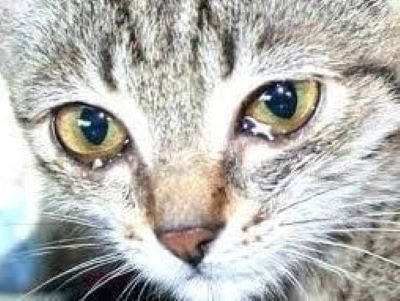
2. Minimizing Exposure to Allergens or Irritants
Identify potential triggers such as dust, pollen, or strong odors, and take steps to reduce your cat’s exposure to them. Keep indoor spaces clean and well-ventilated, use hypoallergenic bedding materials, and avoid harsh chemicals.
Creating an environment with minimal irritants can help alleviate eye symptoms and promote overall eye health for your cat.
3. Protecting the Eyes During Outdoor Activities
Protecting the eyes during outdoor activities is essential for cats with watering eyes. Consider using protective eyewear specifically designed for cats to shield their eyes from potential hazards like dust, debris, or foreign objects.
Additionally, supervise your cat during outdoor plays to prevent eye injuries and minimize exposure to irritants. Taking these precautions can help maintain your cat’s eye health and prevent further watering or irritation.
4. Proper Nutrition and Hydration
Proper nutrition and hydration play a vital role in managing watering eyes in cats. Ensure your cat has a well-balanced diet that provides essential nutrients for overall eye health.
Adequate hydration helps maintain moisture levels in the eyes and supports tear production.
Consult with your veterinarian to determine the appropriate diet and ensure your cat receives optimal nutrition and hydration to support healthy eyes and reduce watering.
5. Regular Veterinary Check-Ups
Regular veterinary check-ups are important for cats with watering eyes. During check-ups, the veterinarian can examine the eyes, assess tear production, and detect any underlying issues.
They can provide guidance on proper eye care, monitor the condition’s progress, and make necessary adjustments to the treatment plan, ensuring optimal eye health for your cat.
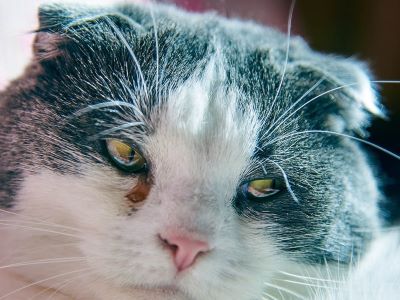
FAQs
Why Is My Cat’s Eye-Watering and Squinting?
If your cat’s eyes are watering it likely means that the eye is attempting to fight off some form of health threat such as a virus or a foreign body. In many cases, the cause is minor and will clear up without veterinary care.
Why Is My Cat Watering Out of One Eye?
Your cat’s eye-watering can appear clean and teary or be very thick and mucus-like. Conjunctivitis can be caused by a variety of issues including infection, allergy, or even dust. The issue is very contagious can but tends to clear up without treatment from your vet.
Why Is My Cat’s Eye-Watering Clear?
Allergies are a surprisingly common issue for cats and can certainly lead a cat’s eyes to become irritated and watery. Common allergies that could affect your cat’s eyes include pollen, mold and mildew dust, household cleaning products, perfumes, and some medications.
Can Cat Eye Infection Spread to Humans?
Is cat conjunctivitis contagious to humans? The chances are very low for the viruses and bacteria responsible for cat conjunctivitis to be transmitted to humans. Regardless, you should still be mindful of some basic rules of hygiene such as washing your hands when petting your poor cat until they recover.
Why Are My Cat’s Eyes Watering All of a Sudden?
Your cat’s eye-watering can appear clean and teary or be very thick and mucus-like. Conjunctivitis can be caused by a variety of issues including infection, allergy, or even dust. The issue is very contagious can but tends to clear up without treatment from your vet.
Why Is My Cat’s Eye-Watering?
They might include dust, mites, mold, mildew, cleaning agents, pollen, fleas, or other products that you keep around the house. If your cat’s eyes are watering and they are developing other signs of itching or skin issues, it may be time to think about a remote vet visit.
Summary
So when your cat’s eyes are watering they require understanding the reasons behind this and taking the right action.
By being attentive to your cat’s eye health, seeking the vet’s guidance when necessary, and implementing preventive measures, you can ensure that your feline companion enjoys bright, clear eyes and a lifetime of well-being.
Remember, the love and care you invest in your cat’s eye health will be reflected in its joyous, sparkling gaze.
Reference:
- Grzyb, K., DVM. (2022, August 24). Dry Eye Syndrome in Cats– PetMD.
- Vet, S., & Vet, S. (2022, October 4). Corneal ulcers – a sore eye – Bishops Stortford Vets. Bishops Stortford Vets – Bishops Stortford Vet Hospital.
- Applying Eye Ointments to Cats- VCA Animal Hospitals.

